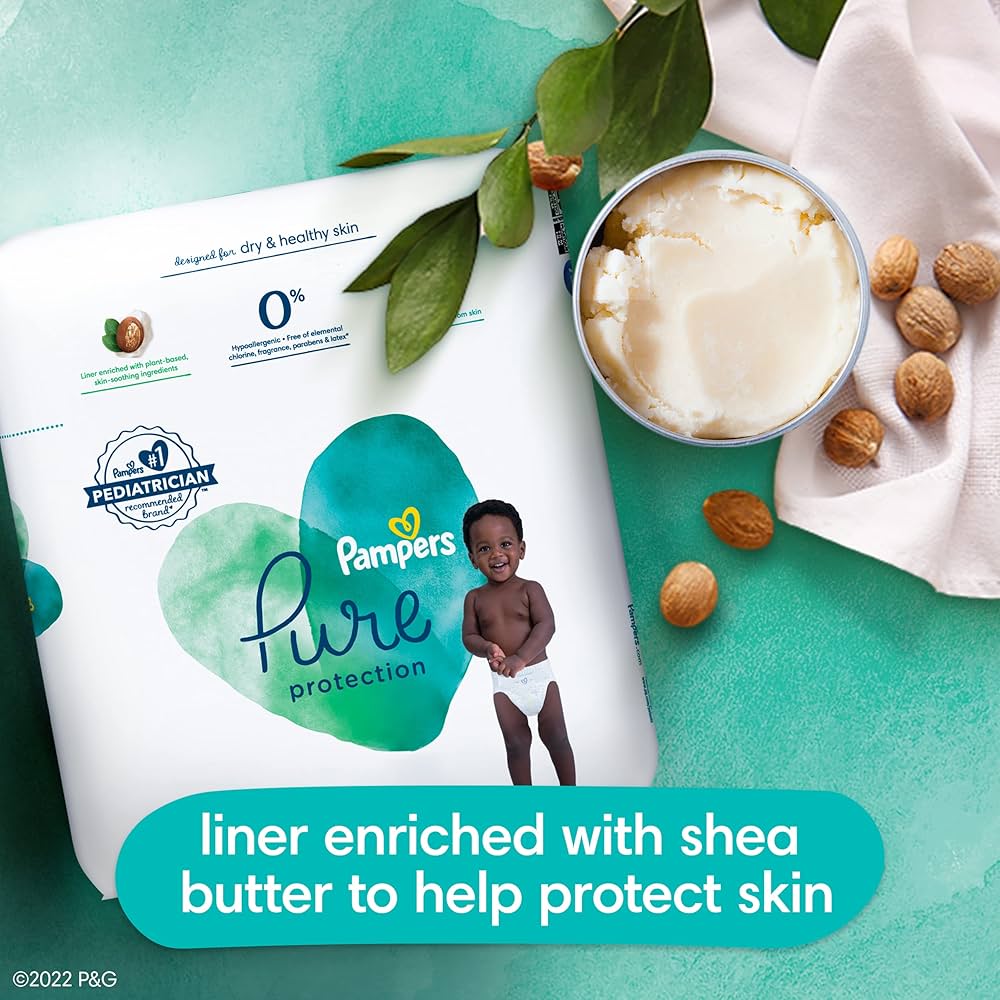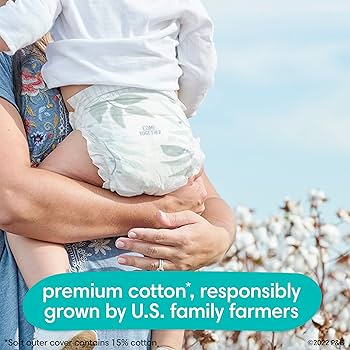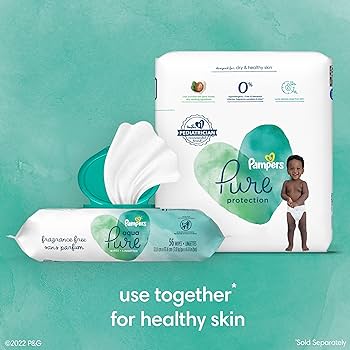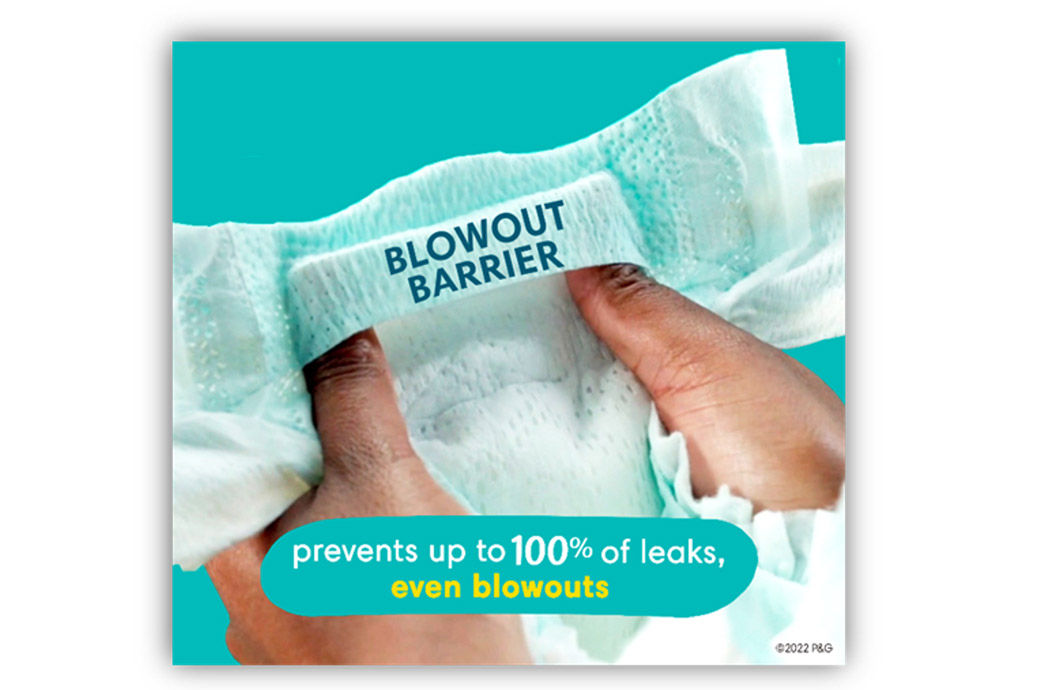The new Pampers® diapers sold in the USA and Europe have a reduced environmental footprint versus the previous versions There is no equivalent method to represent US consumption habits. In the European Union, each conventional disposable diaper is estimated to release 89 grams of CO2 from the production of raw materials; glueless models can reduce that impact by about 10 percent. This is because with the reformulation, there was a tradeoff between further light-weighting diapers decreasing the use of non-woven fabrics mostly sourced from petroleum , on the one hand, and the reduction of pulp with a more absorbent AGM fossil fuel-derived on the other hand. Pampers most sold diapers in The aim of this study was to investigate the factors that influence the sustainability of disposable baby diapers nappies using life cycle assessments LCAs. Herbal Essences is also leveraging its voice to promote the launch of packaging designed to help the visually impaired and beach plastic bottles in its largest market, the US. Additionally, for almost all indicators, the case has lower scores than the baseline case. Environ Sci Technol — MRI Project No.


On average, baby diapers comprise about 1. Subscribe to Impact Report, a weekly newsletter on the trends and issues shaping corporate sustainability. Life cycle assessment LCA is the only holistic framework that exists today to help us understand the many ways in which a product or service could impact the environment, because LCA forces a rational examination of many indicators throughout material and product manufacture, use, and end-of-life EOL. Note that the land occupation indicator is significantly lower for the case since the pulp content was reduced. The Pampers Ambition is to give millions of babies the opportunity for happy healthy development, collaborating with healthcare professionals, parents and NGOs. Download citation. Sorry, a shareable link is not currently available for this article.
Utility Nav - Header
Mirabella, N. Energy production processes are classified into: non-renewable fossil energy e. Manufacturing, packaging, and shipment are relative small sources of energy use, but significant emissions are also associated with the disposal of diapers after use. Herbal Essences is also leveraging its voice to promote the launch of packaging designed to help the visually impaired and beach plastic bottles in its largest market, the US. Monte Carlo analysis comparing green with red diapers in the Western Europe shows the percentage of the iterations when the difference between the two formulations is negative i. You can also search for this author in PubMed Google Scholar. The Brand criteria are requirements for individual brands that are in addition to the corporate programs. Conventional reusable diapers are most often made from cotton, which has large impacts in terms of the water use, pesticides, and carbon dioxide emissions. The magnitude of the material consumption in diapers is impressive. Photo by Niklas Morberg. Herbal Essences bio:renew is the first global hair care brand to have its botanicals endorsed by the Royal Botanic Gardens, Kew , a world leading authority on plants. Results for the US case are very similar see Fig. This is because with the reformulation, there was a tradeoff between further light-weighting diapers decreasing the use of non-woven fabrics mostly sourced from petroleum , on the one hand, and the reduction of pulp with a more absorbent AGM fossil fuel-derived on the other hand. The AP is solely responsible for all content.
Sustainability | Pampers
- Abstract Purpose The aim of this study was to investigate the factors that influence the sustainability of disposable baby diapers nappies using life cycle assessments LCAs.
- Note that the land occupation indicator is significantly lower for the case since the pulp content was reduced.
- DOC kb.
- These pollutants are released by heavy industries and road traffic.
Some disposable diapers are produced with biopolymers of plant origin, which may offer long-term net carbon sequestration from the atmosphere if they are land-filled. Photo by Niklas Morberg. Whether they are used on the very young or the very old, disposable diapers must be regarded as one of the most convenient products of modern society. Question is: what type of impact do these products have on the environment? Conventional reusable diapers are most often made from cotton, which has large impacts in terms of the water use, pesticides, and carbon dioxide emissions. Washing these diapers adds a significant increment to sewage treatment. Disposable diapers often incorporate polypropylene or polyethylene, both petroleum-based plastics, which release fossil CO2 when they are burned and offer no net sequestration of carbon if they are land-filled. A raw material, itaconic acid derived from the fermentation of plant materials, is polymerized to produce fabric. The magnitude of the material consumption in diapers is impressive. Assuming that the typical infant uses more than 4 diapers each day, each weighing 33 grams when dry , then this infant is responsible for about kilograms about lbs of disposable diapers in its first 2. In the European Union, each conventional disposable diaper is estimated to release 89 grams of CO2 from the production of raw materials; glueless models can reduce that impact by about 10 percent. Manufacturing, packaging, and shipment are relative small sources of energy use, but significant emissions are also associated with the disposal of diapers after use. Multiplied by the number of infant children involved, the CO2 emissions add up quickly—estimated at 2. For comparison, total CO2 emissions in the U. Thus reducing the use of disposal diapers would have a rather small effect on our national inventory of greenhouse gas emissions. Alternatively, polymers derived from plants could reduce these emissions to near zero, and provide some net carbon sequestration from the atmosphere. Mendoza, J.
All wood pulp in our diapers is third party certified by a globally recognized certification system, climate pamper us. Pampers diaper packaging is designed to be recyclable where facilities exists. Read about our climate pamper us and commitments for a less wasteful world with our lighter diapers and learnings from waste pilots worldwide. Skip to home Skip to main content Skip to search. Some Of Our Steps from materials to manufacturing. Regrown trees logo One tree is regrown for every tree we use. Certified diapers logo All wood pulp in our diapers is third party certified by a globally recognized certification system. Recycled diapers packaging logo Pampers diaper packaging is designed to be recyclable where facilities exists.



Climate pamper us. We’re On A Journey
We want our brands to be growing and creating climate pamper us while having a measurable, long-term, positive impact on society and the environment. The Herbal Essences Ambition is to enable everyone to experience the positive power of nature and to support biodiversity for the benefit of people and the planet. Beyond this, Herbal Essences is leading the way in sharing comprehensive information about its ingredientstransparently explaining their 4-step safety process and being recognized by PETA as a cruelty free brand. Herbal Essences bio:renew is the first global lupilu pieluchy newborn cena care brand to climate pamper us its botanicals endorsed by the Royal Botanic Gardens, Kewa world leading authority on plants. Herbal Essences is also leveraging its voice to promote the launch of packaging designed to help the visually impaired and beach plastic bottles in its largest market, the US. The Pampers Ambition is to give millions of babies the opportunity for happy healthy development, collaborating with healthcare professionals, parents and NGOs. Lead recycling 3 for diapers and wipes and committing to launch recycling facilities in 3 cities by In March one more country — Chad, has now eliminated this disease, resulting in an estimatednewborn climate pamper us 4 saved since With our brands we are serving five billion people worldwide, giving us the unique opportunity and responsibility to not only delight people through superior product performance, but to also promote conversations, influence attitudes, climate pamper us, change behaviours and make sustainable lifestyles at scale a global reality, climate pamper us. The Brand criteria are requirements for individual brands that are in addition to the corporate programs. Sustainable Brands is the first worldwide community of innovation and sustainability brands and organizations. The conference includes a disruptive format to reinvent brand commitment and open new perspectives. Pampers most sold diapers in East hkstrategies. Skip to main content, climate pamper us.
Some Of Our Steps
The aim of this study was to investigate the factors that influence the sustainability of disposable baby diapers nappies using life cycle assessments LCAs. Size 4 Pampers® Cruisers North American name and ActiveFit European name from are compared to new versions made in to determine if the design and materials changes intended to improve performance also lead to reductions in the most relevant environmental indicators. SimaPro 7 is used to model the LCA.
We thank Jessica Brill for the editorial assistance and Prof. In the European Union, each conventional disposable diaper is estimated to release 89 grams of CO2 from the production of raw materials; glueless models can reduce that impact by about 10 percent, climate pamper us.


Willingly I accept. The question is interesting, I too will take part in discussion. Together we can come to a right answer.